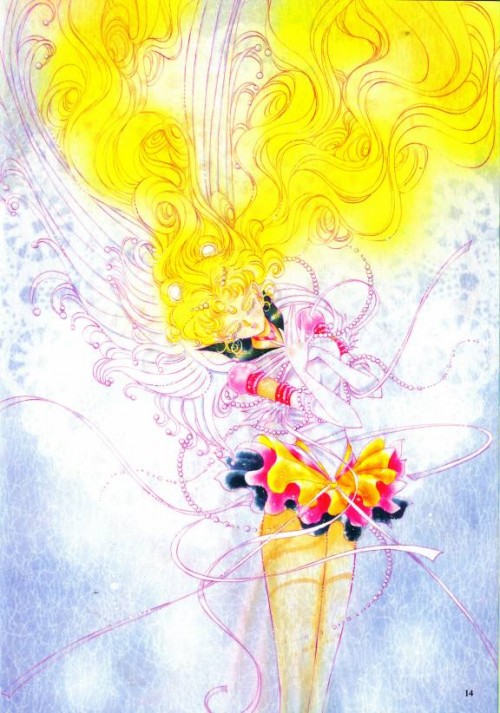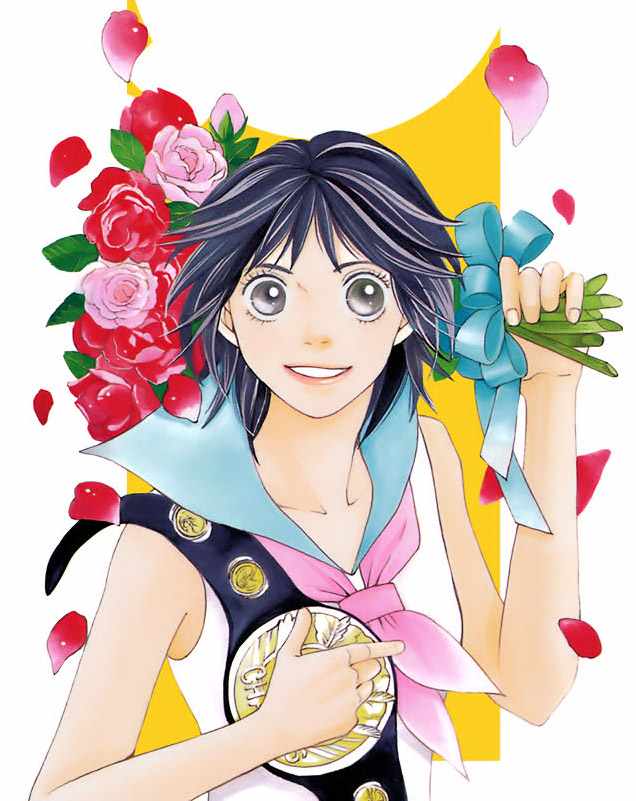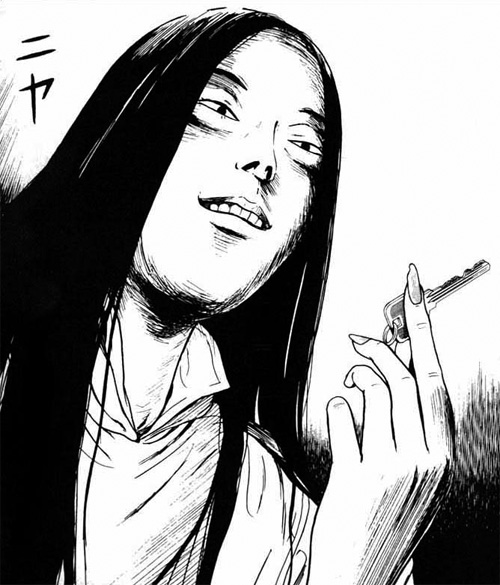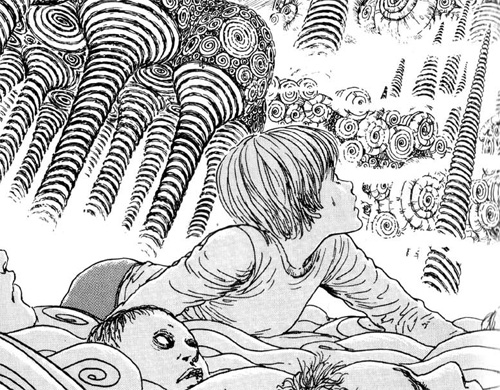Category: Manga

If you haven’t done yourself the favour of reading the original Sailor Moon manga, I suggest you drop whatever stigmas or preconceptions you have of the series and find yourself a copy. Naturally, it suffers from the cliches it helped to establish: baddies-of-the-moment, elaborately named attacks, and a penchant for all the bad parts of 80s women’s fashion. Coupled with the toxic sweetness of Mamoru and Usagi’s relationship, if you go in expecting anything less than the crown jewel of the magical girl genre, you’ll be going in horrendously underprepared. That said, the manga has its merits, and Sailor Moon is definitely one of those “read the manga, skip the anime” type affairs. Any fan of really, really well-drawn and well-paced manga should read Sailor Moon.

Something about the transience of adolescence never fails to inspire. More often than not we wake up, 20, fully grown, and confused as to how we got there. For this reason, mangaka like Kamio Youko are a particularly rare breed. Time and time again, she manages to lushly recreate both the frame of mind and the emotional state of adolescence for her readers. Matsuri Special, her latest manga in a successful career is no exception.
Eden in name only

Hiroki Endo calling his manga ‘Eden‘ is a hint. Eden is supposed to be a paradise on Earth, but Endo‘s version is more like Hell. It’s sarcasm on his part, I think, because this is a contrary and brutal series, where anything that’s good is crushed and anything that’s innocent is (often literally) raped. For the last few days I’ve hardly been able to believe my eyes whilst reading this; everyone keeps dying, and even those who do survive, do so minus their humanity, or, even worse, minus their eye-balls.

I’ve read only 26 chapters of Vinland Saga so far but its quality is such that I have to admit it’s already one of my favourites.
Thorfinn is the main character, an Icelandic warrior joined with a band of Viking mercenaries sailing the seas of Europe and sacking the villages and cities of Norman France and England. His talent as a fighter is chilling, if just because he’s still just a small boy!
This had me hooked straight away. You have this kid (a rag-doll, really) fighting in a bunch of gruesome, heavy battles, cutting the throats of soldiers and decapitating their Captains for the rewards.
It doesn’t shy away from the violence or cruelty of the infamous era of the Vikings, but there’s more to it than just brutality.

Happy new year, everyone! Time sure flies and it’s now looking likely that this blog will live to see it’s fourth anniversary on the 4th of March, which is just… surreal!
This time of year also provides me with the rare opportunity to immerse in some new worlds of fiction. Last year I fell under the spell of Legend of the Galactic Heroes, but this time it was to be Tsutomu Nihei and his six volume Biomega that caught my eye.
Nihei is probably my favourite mangaka. It’s not like I’ve read a lot of manga, but this guy has held my admiration for a long time, ever since I stumbled over his first series, Blame!, where the dialogue is sparse, action is rapid and landscapes are wide, sprawling stretches of textured emptiness.

The island is an isolated town enclosed by huge, unscalable walls, where the outside world is a mystery that no-one even has laid eyes on for 400 years. As its culture dies a slow death, the town’s people have forgotten how to read and write, but the children still dream of escaping, wondering what they might see on the other side, where something as vast -and as salty- as the sea seems impossible to imagine, because their town, their world, is so small, but while the children still run and laugh and dream, the adults are altogether more melancholy, long since resigned to living their lives within the shadows of the unscalable walls.
Island is a very short, one-shot manga that spans only 45 pages, yet it has a vivid and brilliant premise. The walls loom large over everything, an unrelenting reminder of what it means to live life within boundaries and without adventure, where it’s easy to slip into a routine, to work year after year at the same place, to sit in the same stupid chair every day, all without question or concern. It’s about having the courage to take that first step, not knowing what you might find on the other side, but going there anyway, because it’s fun and new and exciting.

Never one to refuse an opportunity to read some delicious horror manga, I’ve whiled away these last couple of weeks plunging my eyes into the many dark crevasses of the internet, hoping in vain to uncover another crawling Enigma of Japanese terror. Forget about all this torture porn nonsense, forget about reality, for me, Halloween is about monsters and ghosts; weird, gross, malevolent abominations of nature inconceivably twisted by a mysterious ill-intent. Until last night, this hunt was rapidly failing. I had resigned myself to a Halloween of ghastly nothingness, but alas, at this most hopeless of hours, my damned savoir and his demented smile lurked forth from the shadows. His name was none other than Go Nagai and his bloody offering was Devilman. And it was perfect. Perfectly and utterly disturbing.
 I mean that. When I’d finally finished reading Devilman, I was left in a state of genuine unease. This 5 volume manga series begins in a relatively innocuous fashion when, much like Batman, our anti-hero Akira Fudo agrees to merge his body with a super-powered demon in order to prevent those very same beasts from feasting on the powerless herds of mankind. This half of the story is typically episodic, with him fighting off any number of ghoulish imps. It’s certainly not scary, but contains a strange charm; monsters aren’t supposed to have feelings, they aren’t supposed to love each other, and yet, in Devilman, they do, and for their mystical, twisted romances, they will sacrifice everything.
I mean that. When I’d finally finished reading Devilman, I was left in a state of genuine unease. This 5 volume manga series begins in a relatively innocuous fashion when, much like Batman, our anti-hero Akira Fudo agrees to merge his body with a super-powered demon in order to prevent those very same beasts from feasting on the powerless herds of mankind. This half of the story is typically episodic, with him fighting off any number of ghoulish imps. It’s certainly not scary, but contains a strange charm; monsters aren’t supposed to have feelings, they aren’t supposed to love each other, and yet, in Devilman, they do, and for their mystical, twisted romances, they will sacrifice everything.
“A brutal devil, a frightening devil. However, a form that should have been ugly and frightening, was beautiful to me. Unspeakably beautiful.“
What happens next can only be described as Armageddon.
After being profoundly frightened by an invasion of horrible demons, the world’s human populace is sent crawling back into the dark ages. Fearful of the monsters hiding amongst them, cowardly, heartless people incite impromptu witch-hunts and the executions of those randomly suspected to be the enemy, including Devilman and his friends. In this purge, no-one is spared; women, children, even babies are slaughtered. Every time you expect someone to be saved, it doesn’t happen. Everyone dies.
Early into the last volume, this ever spiraling sense of hopelessness deeply affected me. There is no escape from such chilling logic and these last two volumes contain some of the most shocking horror I’ve ever read. Go Nagai refuses to compromise on any level and forges ahead, determined to capture man’s self-inflicted and shameful end.
After everything that has happened, after Devilman has lost all that was dear to him, he understandably realizes that the human race isn’t worth saving, but he fights Satan anyway. The outcome is sad but that is fine, for this is real horror. It has monsters, violence, mythology, and, just as important, it has a point, a blunt, painful, affecting stab to the heart.
Ahh, my saviour is the weekend! I know my last post wasn’t exactly beaming with enthusiasm for all things animated, but with two more weeks under my belt, the gloom has lifted and I’m now tucking into tasty helpings of spring stuff on an almost daily basis. Surprisingly, there’s a lot of new series I’m feeling; in particular, Kure-nai and Macross Frontier, both of which I wasn’t expecting to enjoy quite as much as I am, while the likes of Soul Eater and Kaiba remain, as ever, firm favourites.
Anyway, this weekend is special in that it’s an extended one. Come Monday morning, I won’t be dragging myself out of bed for another draining shift at work, but instead, will be feasting on the varied fruits of Japan’s lovely pop culture. Sorry, that’s probably gloating, but the thing is, whenever I get the time to relax for much longer than a few days, I often gravitate towards manga. I’ve never been much of a manga reader, but every now and then, usually during extended, lazy weekends, I get an urge to read something. Like how this morning, I woke up with a vague interest in tracking down the nice looking (in a weird way), post-apocalyptic Dragon Head, but once that proved a little too hard to find, I turned to ZashikiOnna instead, “Regularly chosen as “the scariest manga ever” in magazine horror specials.”

ZashikiOnna is definitely chilling. It’s not scary in a violent or supernatural way, but it’s realistic, believable horror. The story revolves around college ‘player’ Hiroshi, a relatively normal, love-sick young man living a regular student’s life. One evening, he wakes to the sound of someone banging loudly on his neighbour’s door. It’s clear he isn’t in, but the loud knocking continues for a long time. Hiroshi pops his head outside, into the hallway, to find that the knocker is this rather odd-looking girl; messy hair, dirty clothes, tall and thin, she sees him too, her gaze is strange, intense. Saying nothing, he retreats, but suddenly, the banging starts on his door too. It’s the beginning of her deadly obsession with Hiroshi.
It’s a creepy situation to be in, to have someone you don’t know, have never seen before and looks a little unhinged, invade your life. The darkness, ambiguity and mystery surrounding the girl’s fascination with Hiroshi is chilling, there’s no logic or no past connection, she’s an absolute stranger, no life of her own and hell-bent on his constant attention. The worst thing is that, despite being only 1 volume in length, ZashikiOnna is unreleased outside of Japan and only partially scanslated, hence, we’re left hanging in the midst of terror with no end in sight.
If you’re looking for some atmospheric and imaginative scares, I have to recommend ZashikiOnna. It’s the kind of horror best read on your own in a darkened, silent room with nothing but shadows and street-lights for company. For my part, I’d love it if you could recommend to me some one-shot/short manga (of any genre), I’ve got a lot of time to waste over the next few days and I’d love to fill it with some unique reading.

I’ve been reading a lot of manga lately. In the past, I’d go through brief fits of reading the stuff, but it always felt temporary, like a fling while my romance with anime hit the buffers. This time, it’s totally different; I’m ready to devour as much as I can find.
By and large, anime is defined by its limitations; it only looks as good as the money spent on it, but manga is typically drawn by one talented artist; someone with a consistent vision, capable of imagining a fantastic landscape without ever needing to worry about budgets and frame-rates. It’s an untainted, purer style of story-telling, burdened only by the singular abilities of its author.
With my above enthusiasm in-tow, the first stopping point on this fresh journey into the black/white country of comics was always clear; Uzumaki by horror maven Junji Ito. Given I’m still reeling in claustrophobia thanks to his deliciously weird short-story “The Enigma of Amigara Fault“, the idea of slipping into his most acclaimed work to date was an ambition I’ve held for many months.
Uzumaki is the Japanese word for “spiral”. If you know your anime, it will immediately conjure up two obvious references; the main character of Naruto is named “Uzumaki Naruto” and, of course, spirals (and anti-spirals) represent living energy, perhaps even the soul itself, in the excellent Gurren Lagann. I’m not sure why this symbol in particular seems so prevalent in Japanese culture, but Ito’s sinister ideas are quite persuasive. Spirals are obsession.
The dread conjured by completing Uzumaki was similar to the fright I felt when reading of Africa’s army ants. These aggressive colonies, which number in the millions, are constantly on the move. They form a “living architecture”, using their own bodies to build bridges and protective walls against the ravages of the African climate. They feed on almost anything by hunting en-mass, crawling over their prey in their millions and stripping it to the bone; even animals as big as horses have fell victim. Just reading about them, I’m disturbed by their unrelenting aggression and ambiguous intelligence. There is no point in trying to understand their intentions, it’s simply a case of running for your dear life, and that’s Uzumaki in a nut-shell too. A town haunted by a faceless, creeping, crawling malevolence, an unfathomable, undiscriminating curse hell-bent on the total destruction of every man, woman and child.
Beginning in a fine fashion then, the first chapter is brilliantly weird. To the utter bemusement of his relatively normal family, a typical Japanese salary-man is suddenly obsessed with spirals; at first he’s satisfied by merely staring into a snail’s shell, but as his mind gradually unhinges, he starts experimenting with his body too. He doesn’t simply admire the spiral, he wants to become one.
The first two volumes (out of three) are fairly episodic, making up a series of bizarre encounters with the spiral obsession, most of which range from the darkly comic to out-right disgusting. When I say the latter, I’m talking about cannibalistic pregnant women and insane doctors feeding their hungry patients umbilical cords and placenta that, for whatever reason, take root and grow when chopped from newly-born babies; and there’s more, but I’ll leave the rest to your imagination. All of the horror in Uzumaki is, as is Ito’s signature style, sticky and organic; we’re supposed to be sickened, disturbed and freaked by the way he twists and contorts the apparently flexible human body to new extremes.
 It would be fair to say that I enjoyed the first two volumes, but they were merely fun for the sake of horror; I felt nothing for the characters, and the thread-bare plot offered little more than an uneven patch-work of horrific adventures. That is to say, I wasn’t heading into the third (and final) volume over-flowing with enthusiasm, yet it’s a quite remarkable end.
It would be fair to say that I enjoyed the first two volumes, but they were merely fun for the sake of horror; I felt nothing for the characters, and the thread-bare plot offered little more than an uneven patch-work of horrific adventures. That is to say, I wasn’t heading into the third (and final) volume over-flowing with enthusiasm, yet it’s a quite remarkable end.
The entire town, now well beyond rescue, has been completely smashed by the dreaded curse. The last few survivors are starved and confused, tightly grouped together in small wooden huts, hiding from the many terrors roaming the streets outside, including tribes of cruel children capable of riding giant twisters through the wretched remains of modern civilisation. These last few chapters are post-apocalyptic, bereft of hope and beautiful; the landscape is desolate and open, forcing a real fear of loneliness on this reader that’s far more potent than the cheap thrills of earlier volumes.
Ito’s true strength isn’t necessarily his detailed depictions of gore, but his manipulation of human nature, the way he exploits our physical relationship with life and our worries of the unknown; he knows what’s lurking in the darkest caverns of reality, willing to fathom the moon-lit shadows being cast across our bedroom walls.